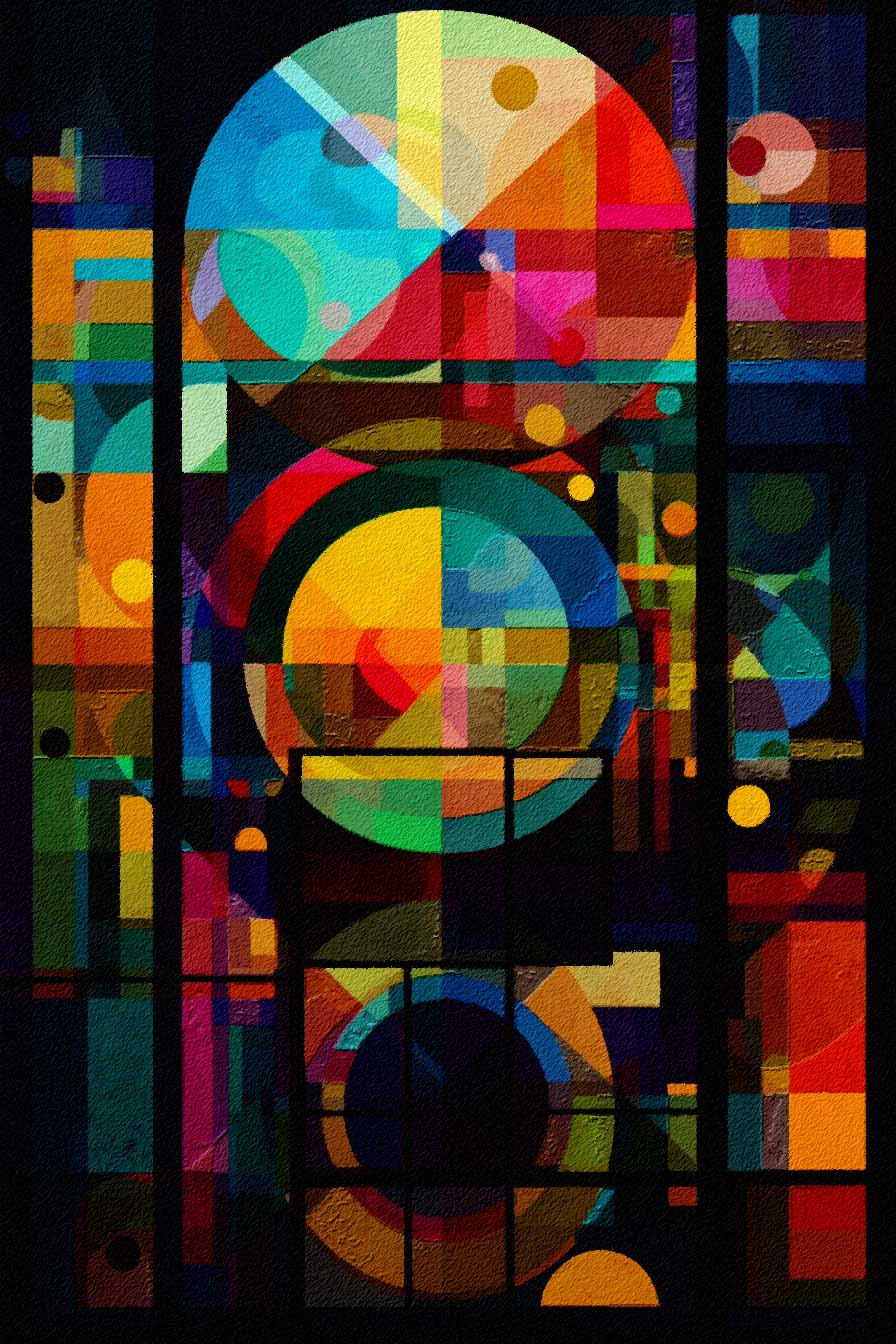
Geometric Art Definition
Geometric art is a form of visual art that emphasizes the use of geometric shapes and patterns in its compositions. These shapes can be simple or complex, and can include circles, squares, triangles, rectangles, and other polygons. Colors are often used in geometric art to enhance the visual impact of the shapes and patterns. The style of geometric art has a rich history that has influenced the work of artists throughout the ages.
Definition of Geometric Art
Geometric art is a style of art that uses geometric shapes and patterns as the primary visual elements in the composition. These shapes can be arranged in a variety of ways to create complex or simple compositions, depending on the artist’s intention. The use of geometric shapes allows artists to create works that are precise and ordered, while still retaining a sense of visual interest and beauty.
Styles of Geometric Art
There are several styles of geometric art that have emerged over the years, each with its own unique characteristics and approach. Some of the most notable styles include:
- Op art: This style of geometric art uses optical illusions to create movement and depth in the composition. Op art often features repeating patterns and bright colors to create a sense of movement and visual interest.
- Minimalism: Minimalist geometric art is characterized by its simplicity and focus on basic shapes and colors. The compositions are often pared down to their essential elements, with a strong emphasis on balance and harmony.
- Constructivism: This style of geometric art originated in Russia in the early 20th century and emphasizes the use of industrial materials and shapes. Constructivist art often features bold colors and abstract compositions that reflect the spirit of the age.
- Cubism: Cubist art uses geometric shapes to represent objects in a way that emphasizes their structural elements. The compositions often include multiple viewpoints, creating a sense of movement and dynamism.
History of Geometric Art
The use of geometric shapes in art dates back to ancient civilizations such as the Egyptians and Greeks, who used geometry to create precise and beautiful architectural designs. However, the modern era of geometric art began in the early 20th century with the emergence of abstract art movements such as Cubism and Constructivism.
The Russian artist Kazimir Malevich is often credited with creating the first truly abstract geometric composition with his 1915 work “Black Square.” This simple composition featured a black square on a white background, and represented a rejection of traditional representational art in favor of pure abstraction.
In the decades that followed, geometric art continued to evolve and develop, with artists from around the world exploring new techniques and styles. Op art emerged in the 1960s as a response to the growing interest in optical illusions and visual trickery, while minimalist geometric art gained popularity in the 1970s and 1980s as a reaction against the excesses of abstract expressionism.
Shapes and Colors in Geometric Art
Geometric art makes use of a wide variety of shapes and colors to create its compositions. Some of the most commonly used shapes include circles, squares, triangles, and rectangles, as well as more complex polygons and irregular shapes. These shapes can be arranged in a variety of ways to create different effects, from simple patterns to complex, abstract compositions.
Colors are also an important element of geometric art, with many artists using bold, bright colors to create visual interest and contrast. The use of color can help to emphasize certain shapes or patterns, and can also create a sense of movement or depth in the composition.
Artists in Geometric Art
There have been many notable artists working in the geometric art style over the years, from pioneers like Kazimir Malevich to contemporary artists working today. Some of the most influential artists in the history of geometric art include:
- Kazimir Malevich: Malevich was a Russian artistwho is widely considered to be one of the pioneers of geometric art. His work “Black Square” is often cited as the first truly abstract geometric composition.
- Piet Mondrian: Mondrian was a Dutch artist who is best known for his abstract geometric compositions featuring primary colors and simple shapes arranged in a grid pattern.
- Bridget Riley: Riley is a British artist who is associated with the Op art movement. Her works often feature repeating patterns and optical illusions that create a sense of movement and depth.
- Sol LeWitt: LeWitt was an American artist who is best known for his minimalist geometric sculptures and wall drawings. His work often features simple shapes arranged in precise, geometric patterns.
- Frank Stella: Stella is an American artist who is associated with the minimalist geometric art movement. His works often feature large, flat areas of color and simple, geometric shapes arranged in a variety of patterns.
Most Famous Geometric Arts In The World Today
From iconic masterpieces to groundbreaking movements, join us on a journey through the rich history and enduring allure of geometric art.
- “Mona Lisa” by Leonardo da Vinci: While not a traditional geometric artwork, the “Mona Lisa” is undoubtedly one of the most famous paintings of all time. With its carefully constructed composition and use of geometry in the background, this enigmatic portrait has fascinated art lovers for centuries.
- “Composition II in Red, Blue, and Yellow” by Piet Mondrian: Mondrian’s iconic artwork, characterized by its intersecting black lines and primary colored rectangles, has become synonymous with geometric abstraction. Its balanced composition and harmonious use of color have inspired countless artists and designers.
- “Les Demoiselles d’Avignon” by Pablo Picasso: Picasso’s groundbreaking masterpiece shattered artistic conventions with its fragmented and distorted figures. By incorporating geometric shapes and multiple viewpoints, Picasso laid the foundation for the Cubist movement and forever changed the course of art history.
- “Black Square” by Kazimir Malevich: Malevich’s “Black Square” is a seminal work in the development of abstract art. With its simple yet powerful statement, this monochromatic square challenged traditional notions of representation and marked the birth of Suprematism.
- “Homage to the Square” series by Josef Albers: Albers’ series of paintings explored the optical interactions and harmonies of colors within nested squares. Through meticulous experimentation, Albers created mesmerizing compositions that showcased the inherent beauty and complexity of geometric forms.
- “Yellow Quadrilateral” by El Lissitzky: Lissitzky, a key figure in the Russian avant-garde movement, used geometric shapes to express his artistic vision. “Yellow Quadrilateral” exemplifies Lissitzky’s exploration of form, space, and color, reflecting the principles of Constructivism.
- “Theo van Doesburg” by Theo van Doesburg: Theo van Doesburg, co-founder of the De Stijl movement, embraced geometric abstraction in his art. Through his iconic self-portrait, he demonstrated the fusion of art and design, incorporating geometric shapes, primary colors, and a sense of balance and harmony.
- “Suprematist Composition: White on White” by Kazimir Malevich: Malevich’s “White on White” is a pinnacle of Suprematism, challenging the viewer’s perception of space and form. With its subtle variations of white, this painting explores the purity and transcendence of geometric abstraction.
- “Squares with Concentric Circles” by Wassily Kandinsky: Kandinsky, a pioneer of abstract art, believed that geometric shapes held spiritual and emotional significance. “Squares with Concentric Circles” is a vibrant representation of Kandinsky’s exploration of the interaction between colors and geometric forms.
- “Broadway Boogie Woogie” by Piet Mondrian: Inspired by the energy and rhythm of New York City, Mondrian’s “Broadway Boogie Woogie” captures the essence of the bustling metropolis. With its grid of colorful squares and rectangles, this artwork showcases the artist’s pursuit of dynamic balance and visual harmony.
Geometric art is a style of visual art that emphasizes the use of geometric shapes and patterns in its compositions. It has a rich history that dates back to ancient civilizations, but it truly emerged as a distinct art movement in the early 20th century with the advent of abstract art. Today, geometric art continues to be a popular and influential style, with many artists around the world working in this style and pushing its boundaries in new and exciting ways.
Geometric art has transcended time and continues to inspire and captivate audiences worldwide. Through the stories and news surrounding these famous artworks, we have glimpsed into the minds of visionary artists who pushed the boundaries of artistic expression. From Mondrian’s vibrant compositions to Malevich’s radical abstractions, geometric art remains an enduring testament to the power of form, color, and composition in shaping the artistic landscape.




